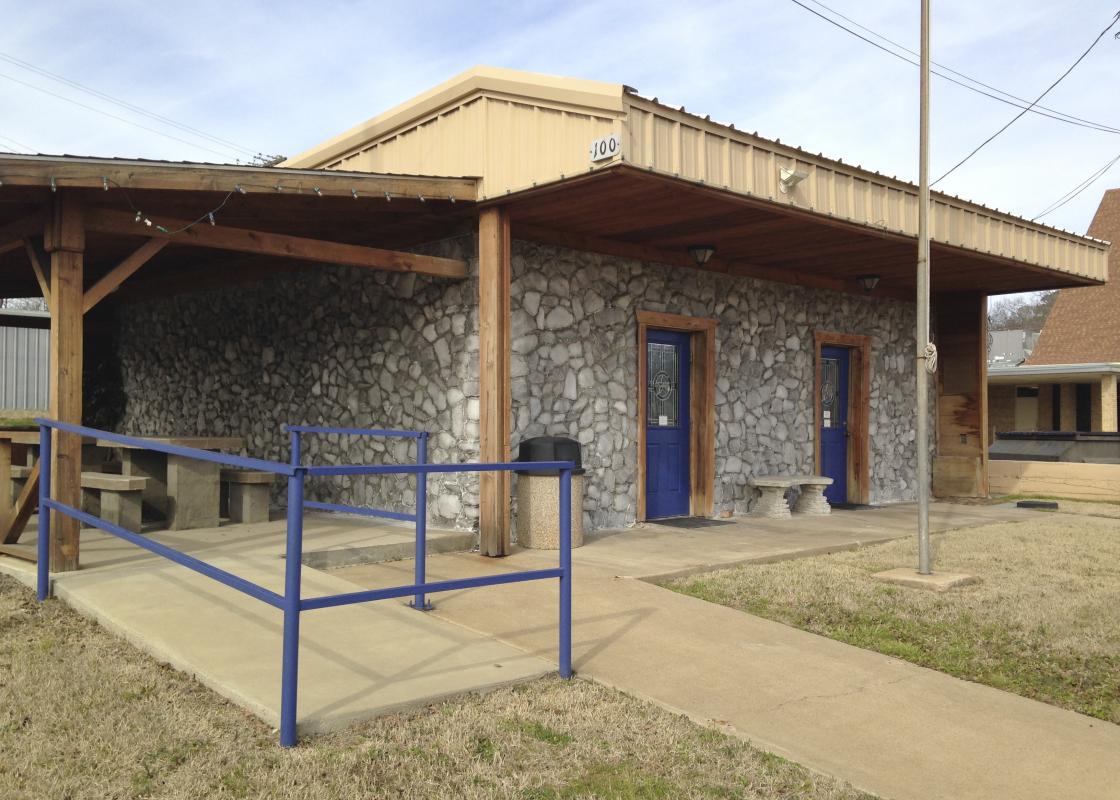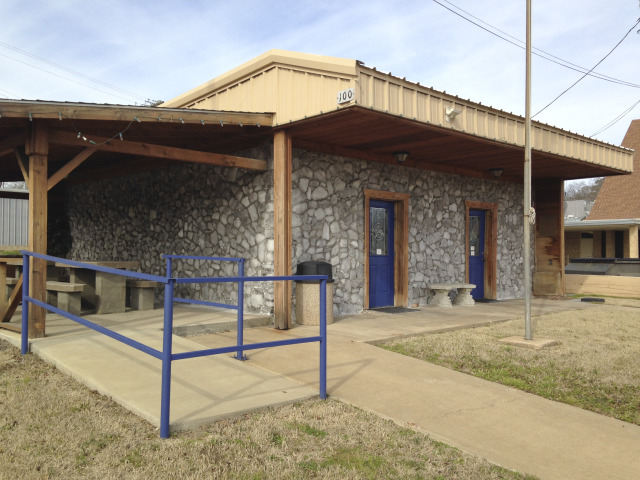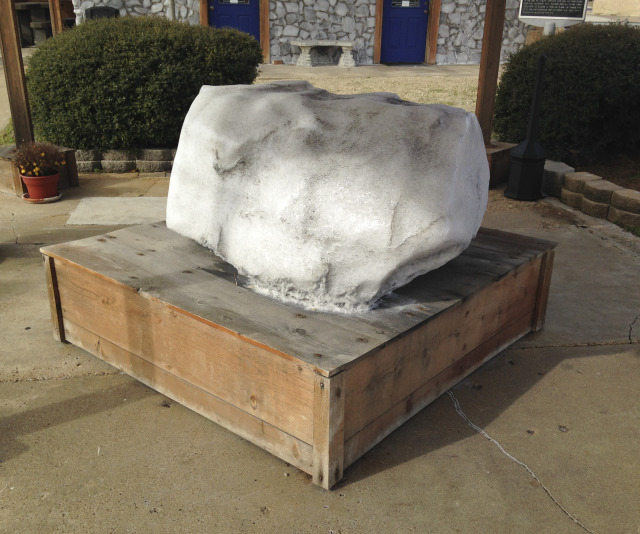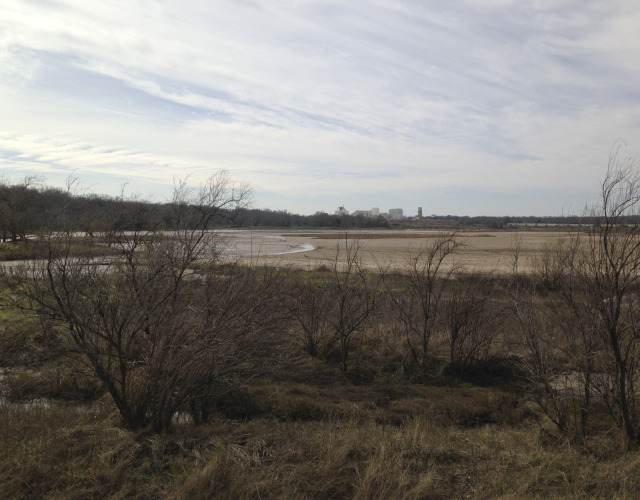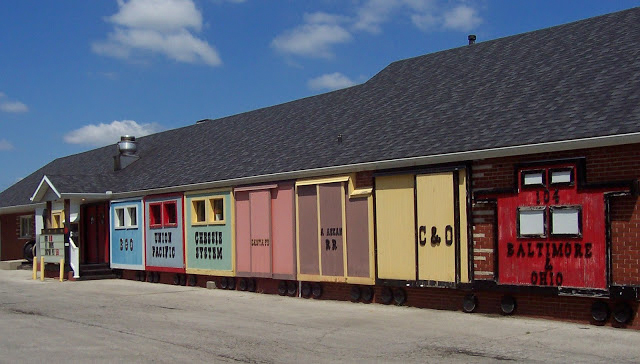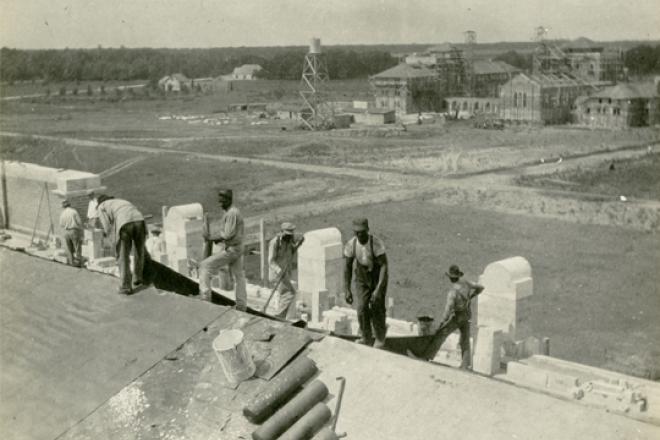I licked it. In Grand Saline, Texas, I licked the Salt Palace, the country’s largest, and probably only, building constructed partially out of stone-sized chunks of rock salt.
Grand Saline, population 3,300, is about an hour east of Dallas. The town sits on a 20,000-foot-thick deposit formed during the Permian Age that could salt the entire country for another 20,000 years, were it the only one that remained. That deposit has been overseen since 1920 by various iterations of Morton Salt, which now operates a shaft that plunges more than 750 feet down. Unfortunately, the mine is no longer open to the public. Photographs and a 20-minute video inside the Salt Palace Museum and Visitors Center show a cavernous interior that is dry and white — like a hollowed-out Moon or a more savory version of Superman's Fortress of Solitude.
The chunks that come up out of there are saltier and kickier than you'd think, potent enough to send you into a full-body pucker. (And kosher, too, in case you're wondering. Grand Saline invited a rabbi to bless the entire deposit.) It's an acquired taste. The chunks I was given as souvenirs I kept for months in the center console in my Honda, and I kept popping them in my mouth for reasons that are best unexplored here.
The current palace is the fourth that has stood on this site near the intersection of Highway 80 and 110. The first was completed in 1936 and shaped to resemble the Alamo. The second, built in 1960, looked like a concession stand made out of alabaster Legos. The third was completed in 1975, when Grand Saline's annual Salt Festival was inaugurated, and shaped, too, to resemble the Alamo. By the early '90s, it was in bad shape — dissolving, essentially.
What the current palace lacks in aesthetics it makes up for in durability. Only two of the walls are constructed out of rock salt. Out front, a pavilion protects an especially large chunk, set atop a pedestal, and a covered patio with picnic tables juts off to the side. The walls have acquired some grime, and they're held together with a gray joint compound. They look more like a castle than a palace; the place doesn't exactly gleam. But it's topped with a corrugated metal roof which funnels rain away from the foundation, so it should last a bit longer than the previous three.
Inside, there are display cases of shakers, canisters, and other Morton-related knick-knacks. There's a pamphlet featuring the evolution of the famous Salt Girl, she of the yellow dress and umbrella. The museum docent explained that every school year eight second-graders are elected Salt Girls. It's quite an honor, she said. Boys are chosen to wear navy blazers and serve as the girls' escorts.
During my visit, I learned that the salt has been an attraction for centuries. Animals first discovered the flats behind where the 250-employee Morton facility now sits. (Only about 14 employees actually get to go down into the mine.) The Caddo people followed the animals and lived here, then the Cherokee, who in 1834 first evaporated groundwater from the flats to produce usable salt. During the Civil War, the Confederacy took the salt works over from private ownership and produced about 100 pounds of salt a day.
A current Grand Saliner, maybe in her 70s, was visiting with the docent and decided to sit down and watch the video with me. She marveled audibly at the images of the mine. Afterward, she told me that the flats were a popular spot for her and her friends during high school to go "parking."
When I was in high school, the spot was a paved cul-de-sac that didn’t have any houses on it. When I was in Grand Saline, I couldn’t help comparing it with my hometown in Indiana. Though Garrett is almost twice as populous as Grand Saline, we too have a history connected largely to the fortunes of a single company, and we, too, have a museum dedicated to that history: the Railroad History Museum, which operates out of the decommissioned Baltimore & Ohio depot.
Inside, you can find engineers’ caps and other signifiers of the railroad, but the history is almost everywhere you look in the town itself. Garrett's named after one of the first presidents of B&O. For years, the "nice" restaurant in town, The Railroad Inn, was a long, low building decorated to resemble a row of box cars and an engine. (It's since closed.) The one work of public art I remember is a repainted caboose that sits behind a fence near the community pool. When our football team --- our mascot is a Railroader --- scores a touchdown on Friday night, crossing lights built into the scoreboard flash back and forth, a horn blasting loud enough to hear all over town. Our cheerleaders yell: Roll. Big. Train.
Grand Saline's annual Salt Festival has concerts, a parade, bingo tournament, and a baking contest. At least those recipes call for salt. My hometown throws Heritage Days, but they don't have much to do with the railroad. Maybe I've watched one too many episodes of Parks and Recreation, but I imagine that one day Garrett will go all in on its heritage and transform into a regional transportation hub. It's positioned between Detroit and Indianapolis, Chicago and Cleveland --- maybe town leaders can persuade a private company to build high-speed rail connecting all these Rust Belt cities to each other via a glass-and-steel terminal in my hometown. Restaurants, shops, and hotels would follow. Young people might be moved to stem the brain drain and stay in the Midwest.
Maybe I've been spoiled by Houston's attitudes about change, about history. It's not unreasonable to imagine that this city --- our ways of dwelling, ways of getting around, ways of making a living --- will become something greater than what it is now, transformed by new technologies and new investments. The fates (and finances) of Grand Saline and Garrett and rural towns like them are largely determined. The small museums that are part of these towns take on a shadow cast by history. It's as though the Salt Palace is Grand Saline's offering to appease the Gods of Salt to keep that 250-million-year-old deposit alive. The Railroad History Museum is Garrett's way of mourning. Those trains are never coming back.


